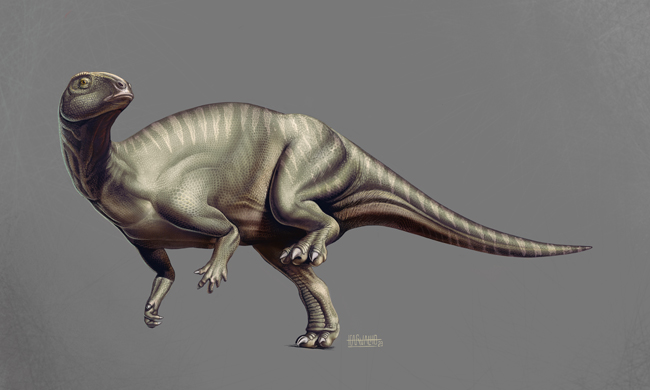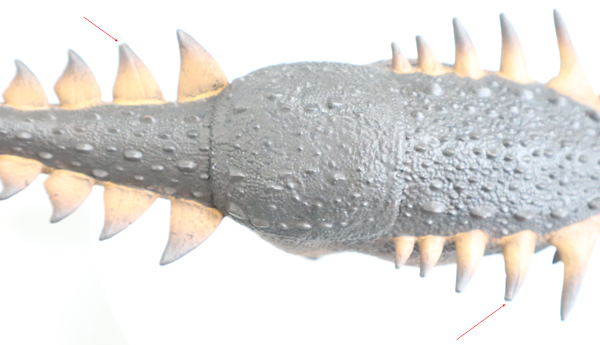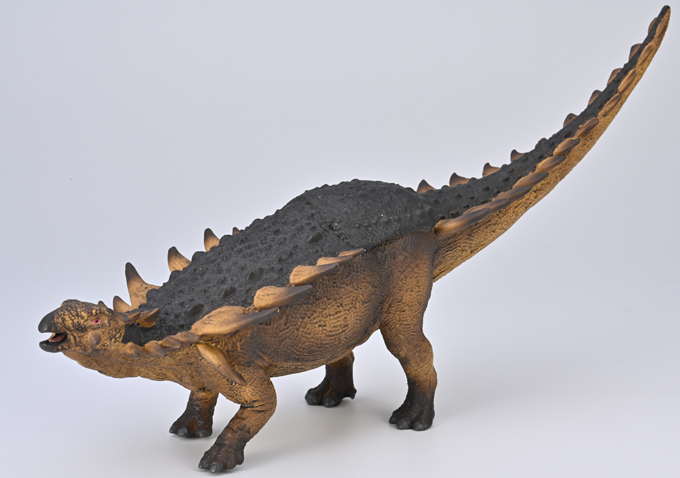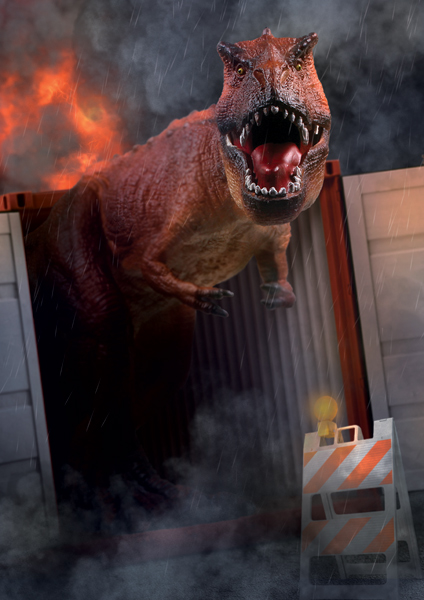A New Iguanodontian Dinosaur from Portugal
A new species of Late Jurassic iguanodontian has been described from fossils discovered in western Portugal. The dinosaur has been named Hesperonyx martinhotomasorum. The discovery of this dinosaur adds to the diversity of relatively small ornithopods known from the Lourinhã Formation. The fossil material consisting of a partial left hindlimb and isolated forelimb bones were excavated from the cliffs at the picturesque Porto Dinheiro beach (Lourinhã, Portugal). The fossils probably represent a single, individual dinosaur.
Hesperonyx martinhotomasorum
The researchers conclude that this dinosaur had a body length of between 3-4 metres. It was rather small when compared to Early Cretaceous iguanodontians such as Iguanodon bernissartensis which had an estimated length of approximately 10 metres and weighed around 5 tonnes. The forelimb bones lack modifications for quadrupedal locomotion. Hesperonyx probably was a biped and considerably more agile than later, much larger iguanodontians.
Hesperonyx roamed western Portugal approximately 150 million years ago (Late Jurassic). The research project was a collaboration between scientists from the NOVA School of Science and Technology, University of Zaragoza and University of Bonn, supported by the local Museu da Lourinhã and Sociedade de História Natural de Torres Vedras.
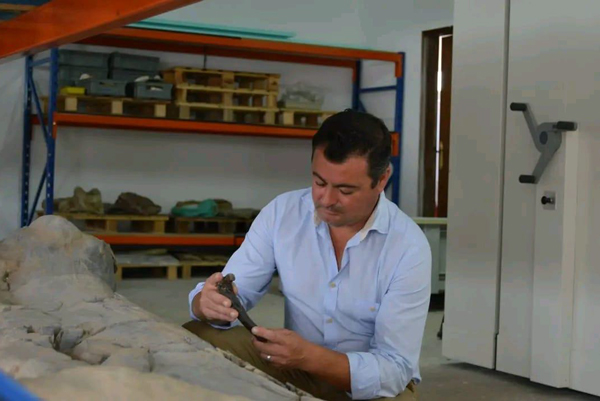
Co-author of the study Bruno Camilo, head of Sociedade of História Natural of Torres Vedras (Universidade NOVA de Lisboa). Picture credit: Universidade NOVA de Lisboa.
A New Dinosaur Taxon
The almost complete and semi-articulated left hindlimb was discovered in the summer of 2021. The fossil material was cleaned and prepared in the Museu da Lourinhã laboratory. The morphology of the bones puzzled the researchers.
Student and co-author of the scientific paper Lucrezia Ferrari who worked on the fossilised material commented:
“It simply did not match anything we have seen before.”
The team were quietly confident that these fossils represented a new dinosaur taxon.
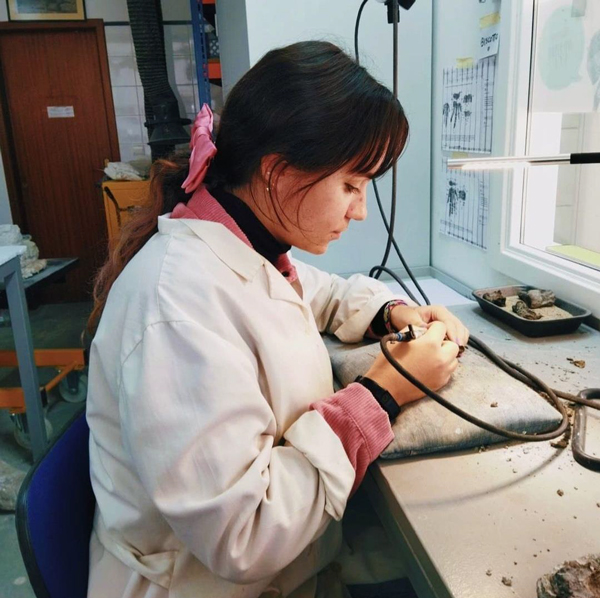
Student Lucrezia Ferrari who worked on the fossil preparation and presented a thesis on this new ornithopod dinosaur as part of her Master’s degree. Picture credit: Universidade NOVA de Lisboa.
Filippo Maria Rotatori, lead author of the paper published in the Journal of Vertebrate Palaeontology added:
“It was something familiar, but it has several features that just looked unusual. It was some kind of bipedal herbivorous dinosaur, but such animal was never recorded in Portugal before. It’s a new species. One more in the highly diverse ecosystem of the Portuguese Jurassic.”
What’s in a Name?
The genus name is derived from “Hesperus” the Greek God, whose name is associated with the planet Venus and it being seen in the western sky. This is a nod to the fact that the fossils come from the western region of Portugal. The genus name also contains the Greek “onyx” meaning claw. The specific name honours Micael Martinho and Carla Alexandra Tomás for their dedicated work as fossil preparators at the Museu da Lourinhã.
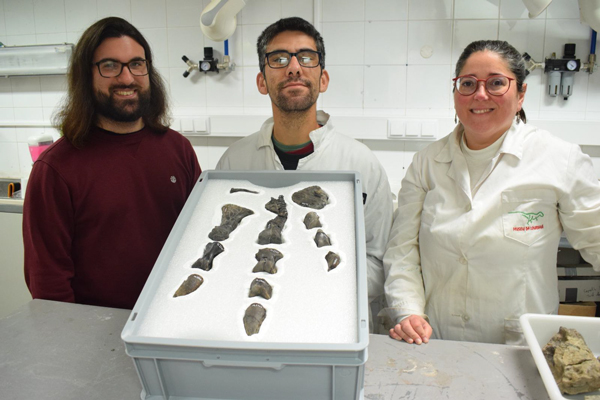
Lead author of the scientific paper, Filippo Maria Rotatori with the preparators Micael Martinho and Carla Tomás (Museu da Lourinhã) with the toe bones. The trivial name of this new dinosaur honours Micael and Carlo and recognises their dedication to the work of fossil preparation. Picture credit: Universidade NOVA de Lisboa.
Hesperonyx martinhotomasorum – A Small Iguanodontian Dinosaur
The Iguanodontia is an extensive and specious clade of ornithischian dinosaurs. These herbivores were abundant during the Jurassic and Cretaceous. Their early origins are not well understood. This is due to the lack of fossil material representing basal members of this clade. The fossil record of early iguanodontians is particularly poor in Europe. Only a handful of European species are currently recognised. For example, Cumnoria prestwichii and the geologically older Callovosaurus leedsi, both these dinosaurs are associated with English Jurassic deposits (Oxfordshire and Cambridgeshire respectively).
The discovery of Hesperonyx adds to the diversity of small ornithopod dinosaurs already recognised in the fossil record of the Lourinhã Formation. It was an unexpected fossil find. Hesperonyx demonstrates that there are probably many more types of dinosaur awaiting discovery in the Upper Jurassic strata of western Portugal.
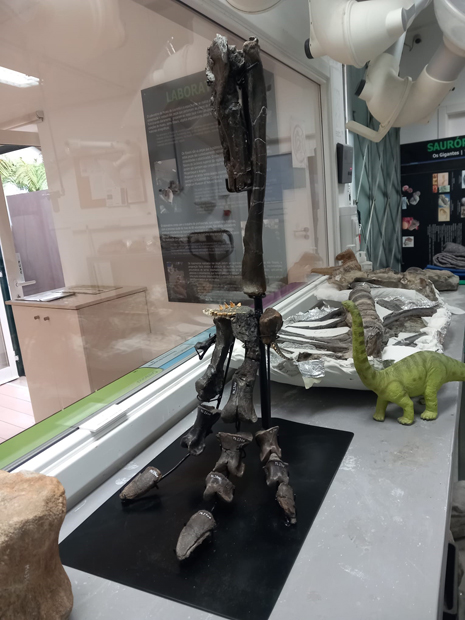
The partial left hindlimb of Hesperonyx martinhotomasorum assembled to reflect the position within the skeleton. Picture credit: Inês Marques.
Miguel Moreno-Azanza, the main advisor of Filippo, noted:
“This is a wonderful discovery, and also a great example of how scientific collaborations in palaeontology can help to reach great results.”
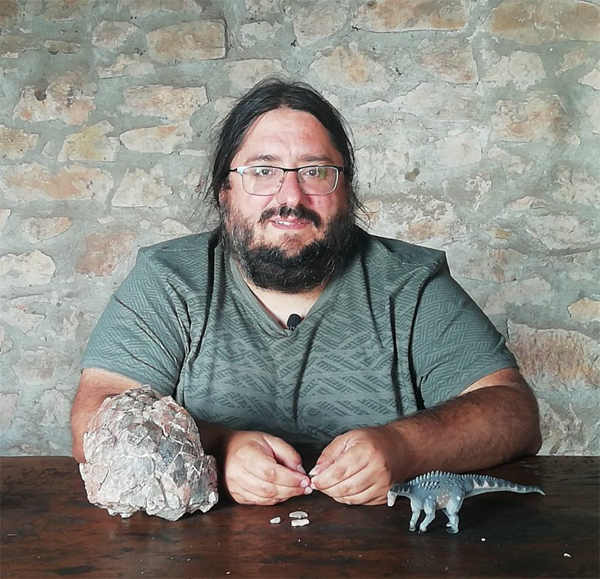
Miguel Moreno-Azanza, from Zaragoza University, co-author of the Hesperonyx scientific paper with a titanosaur egg fossil and an Ampelosaurus model. Picture credit: Universidade NOVA de Lisboa.
Everything Dinosaur recognises the assistance of a media release and personal email correspondence with the lead author in the compilation of this article.
The scientific paper: “An unexpected early-diverging iguanodontian dinosaur (Ornithischia, Ornithopoda) from the Upper Jurassic of Portugal” by Filippo Maria Rotatori, Lucrezia Ferrari, Cristina Sequero, Bruno Camilo, Octávio Mateus and Miguel Moreno-Azanza published in the Journal of Vertebrate Palaeontology.


